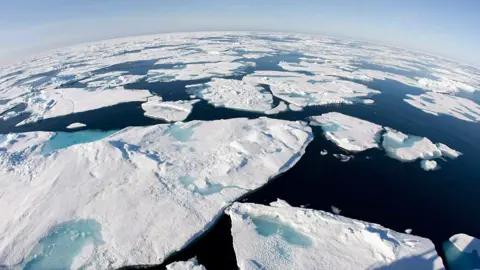The discovery of thriving life beneath the Arctic ice changes scientists' understanding of the polar environment

In an unprecedented scientific discovery, an international research team announced the finding of new forms of microbial life living and thriving beneath the Arctic Ocean ice, in an environment that was previously considered uninhabitable due to perpetual darkness and extremely low temperatures, according to Science Alert and reported by Eram News.
The research reveals that microbes capable of fixing nitrogen gas – which makes up about 78% of the Earth's atmosphere – are densely distributed in the depths of the Arctic, despite the harsh conditions prevailing in the area. This discovery represents a significant shift in scientists' understanding of the nitrogen cycle and the impact of climate on polar and global ecosystems.
Lisa von Friesen, a marine biologist at the University of Copenhagen and the leader of the research team, stated: "It was believed that the nitrogen fixation process could not occur beneath sea ice due to the absence of light and extreme cold... but it turns out we were wrong."
The report indicates that the team discovered a new microbial community known as non-cyanobacterial diazotrophs (NCDs), which are bacteria that do not rely on light to produce energy, but have the genetic capability to convert nitrogen into compounds usable by other living organisms, making them a vital component of the marine food chain.
Although scientists have not yet confirmed whether these organisms actually perform nitrogen fixation in the Arctic environment, their widespread distribution and high density indicate a potential ecological role for them in that area.
The results show that the edges of sea ice are the most abundant in these microbes, which means that the accelerated melting of ice due to climate change may expand their range and cause significant changes in the marine food web and possibly even in the atmosphere itself.
Von Friesen explains that this microbial activity could lead to increased algal growth in the area, which feeds small creatures like crustaceans and fish, potentially reshaping the entire marine life in the Arctic.
